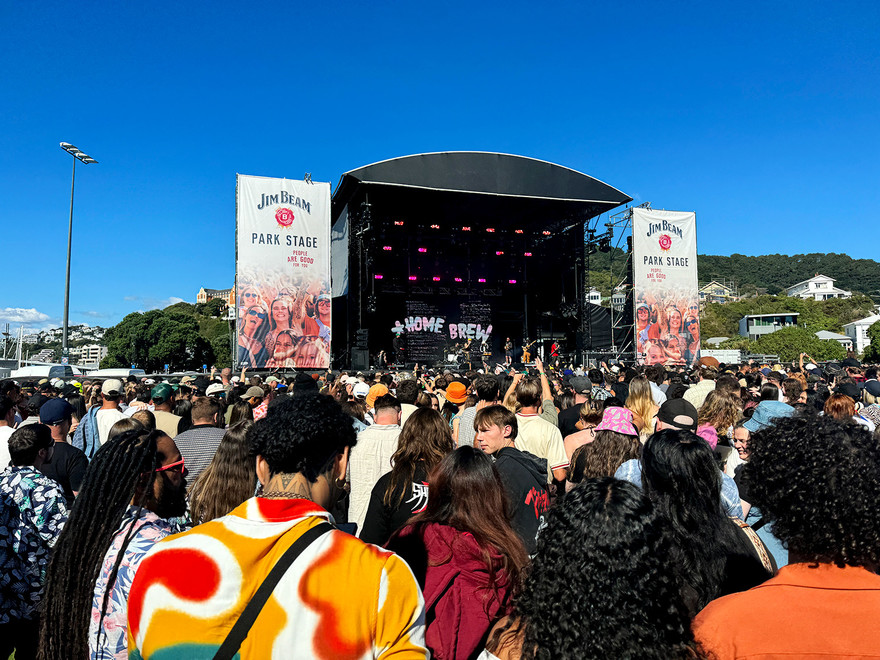
Home Brew at the Park Stage, Homegrown, Wellington, 2024. - Photo by Pretoria Gordon/RNZ
In 2008, huge crowds of music lovers from around the country began spending ANZAC Day weekend flocking to Wellington’s waterfront for the annual sold-out Homegrown music festival. Specifically focused on New Zealand music – with an emphasis on reggae, rock, pop, hip-hop, RnB, and dance music – Homegrown has become a summer institution in the capital, growing from 13,000 attendees to over 20,000.
Since then, the festival has provided a pivotal performance platform for several generations of commercially minded local talent, with side forays into indie rock, underground hip-hop, and electronica along the way. However, despite ostensibly beginning in the late 2000s, the road to Homegrown actually began at the very tail end of the 20th century in another North Island city.
Homegrown origins: X*Air
In 1999, Mark Wright began organising a yearly extreme sports festival called X*Air in Hamilton. Dreamt up over a BBQ and a few beers after a day spent wakeboarding on the river, X*Air began as a skate, BMX, motocross, and wakeboarding showcase soundtracked by DJs. Loosely styled after the longstanding American X-Games, the event quickly grew in popularity over the following years. After picking up sponsorship from the Vodafone telecommunications company (now One NZ), it became a marquee event in the Waikato region. Wright told Fiona Connor for the Daily Mail Australia in 2018, “Really, I just wanted to blow people away with what the athletes could do and give them a great day out.”
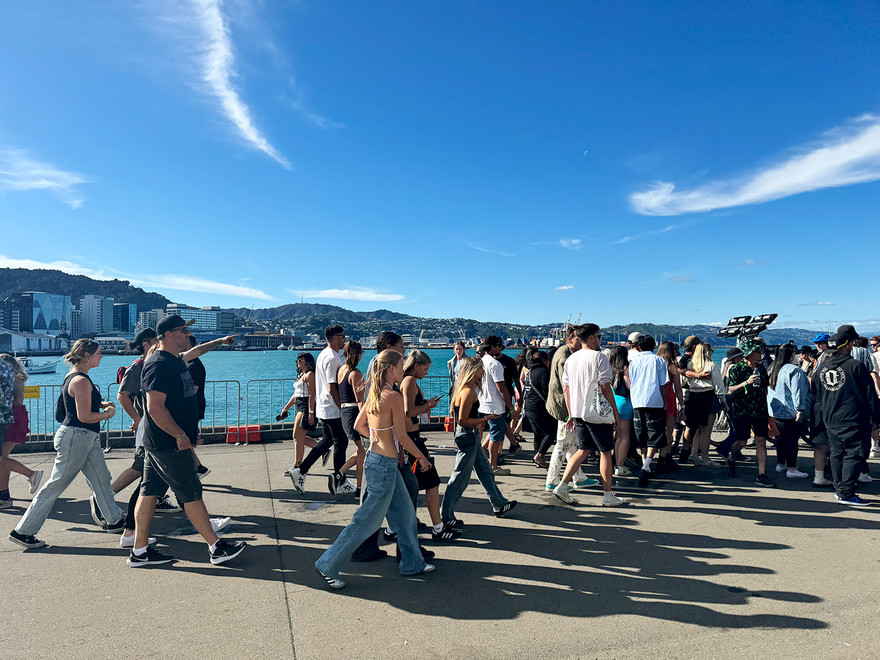
On the waterfront: festivalgoers at Homegrown, Wellington, 2024. - Photo RNZ/Pretoria Gordon
However, by the mid-2000s, change was in the wind. In a 2004 interview with the NZ Herald, where he discussed the event’s future, Wright said, “It’s highly likely it [X-Air] will go to Wellington. For the event to evolve, Wellington is where I would like to move it.” The following year, he relocated X*Air to Wellington’s waterfront, where the young attendees were wowed by awe-inspiring skateboarding demonstrations from international skateboarding and BMX stars such as Tony Hawke, Sandro Dias, Bucky Lasek, Pierre-Luc Gagnon, Ryan Nyquist, Dave Mirra, Jay Mirron, and Dennis McCoy.
From the early days in Hamilton, music played a significant role in X*Air and the extreme sports culture surrounding it. By 2006, Wright imagined organising a New Zealand music festival, perhaps at Queen Elizabeth Park in Paekakariki. His vision was a high-production day out where audiences could enjoy a range of popular music from across the country. Serendipitously, Vodafone was having internal discussions about changing its sponsorship focus from extreme sports to music.
After talking with Vodafone and the Wellington City Council, Wright and the X*Air team settled on transforming the event into a music festival. In 2008, they held the first edition on 26 April, the Saturday of ANZAC Day weekend. Vodafone Homegrown was born.
Vodafone Homegrown
In 2008, Vodafone Homegrown showcased performances from 35 of New Zealand’s most popular bands, solo acts and DJs of the era, including Shihad, The Feelers, Pluto, Kora, Salmonella Dub, Tim Phin, The Mint Chicks, Phoenix Foundation and The Black Seeds. Divided into five stages of rock, pop, indie, dub, roots, dance and hip-hop music, the festival also included street performers, break dance competitions, and art exhibitions.
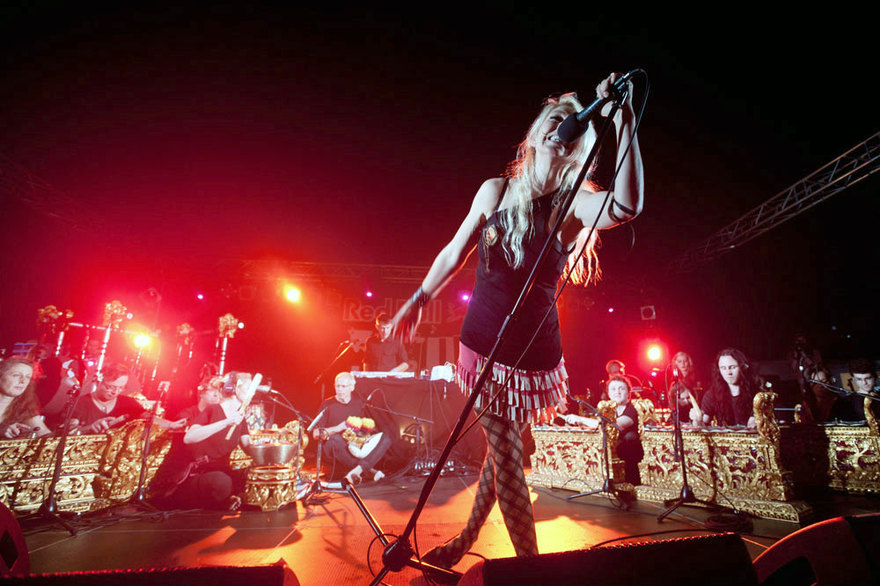
Minuit at Wellington's HomeGrown Festival, with Gamelan by Taniwha Jaya - Photo by Sean Aickin
On Monday 7 April that year – three weeks before show day – the Vodafone Homegrown team sent out a press release announcing that the last of the festival’s 13,000 tickets had sold out. In that presser, Wright noted he was delighted with the response and saw it as a testament to the strength of New Zealand music. In his words, “We have actually sold 1500 less tickets than our maximum capacity to try and make sure everybody can see the acts they want to.”
Leading into the festival, the American bourbon whiskey brand Jim Beam and The Rock FM agreed to sponsor the rock stage. As part of the process, they began running a competition called the Jim Beam Rock Search to find an up-and-coming band to play at Vodafone Homegrown. That year, they selected the Auckland rock group Payola. In 2009, the slot went to former D4 singer Jimmy Christmas’s then-new Lugar Boa band.
In a review after the 2008 show, the now-defunct Wellington events guide Texture lavished Vodafone Homegrown with praise: “Blessed by good weather, Vodafone Homegrown had a lot to prove if it was going to live up to all the hype surrounding its inaugural year. And in most areas, that promise was fulfilled. Thirty-plus local acts appearing on four stages for over 10 hours had all the hallmarks of a logistical nightmare in the making. Yet the Wellington waterfront was a good choice for such an undertaking, providing space and scenery to enhance the spectacle on hand.”
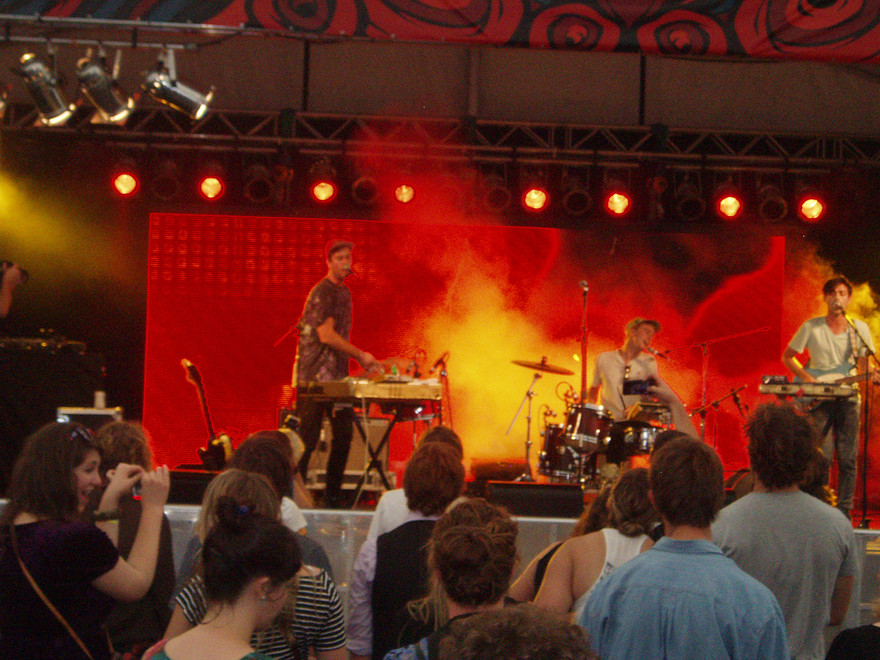
The Ruby Suns performing at Homegrown
Similarly, in a review for Stuff, Lane Nichols praised performances from reggae band Cornerstone Roots, live electronica group Minuit, Queenstown MC/DJ group Sunshine Sound System, and Wellington dub-funksters The Black Seeds. In Nichols’ words, “My legs ached, my ears rang, my cash was spent. Time for bed. Nice one, Homegrown. See you next year?”
In 2009, Homegrown returned under the Vodafone brand. Along the way, they picked up further stage sponsorships, such as the Cadbury Moro Dub & Roots Stage, the SmokeFree Electronic Stage, the Nokia Indie Stage, the George FM DJ Stage, and the free-to-the-public Wellington City Council Stage.
That year, the much-loved 90s Wellington alternative rock band Head Like A Hole reformed to perform at the festival. In a review for Stuff, music writer Simon Sweetman observed that “Led by Booga Beazley’s rock-star antics, they [Head Like A Hole] pumped out a full-on set of sleazy, sludgy rock and metal with the iconic cover of Bruce Springsteen’s ‘I’m on Fire’ following their original “hits” ‘Faster Hooves’, ‘Comfortably Shagged’, ‘A Crying Shame’, and ‘Fish Across Face’.”
Head Like A Hole joined a sprawling line-up that included appearances from two other semi-recently reformed groups, funk-rockers Supergroove and Wellington hard-rock band Weta. They appeared alongside the likes of Opshop, Elemeno P, Dimmer, Fur Patrol, DJ Manuel Bundy, DJ Tim Phinn, Aural Trash, Shapeshifter, Concord Dawn, Tiki Taane, The Black Seeds, and Katchafire. Building on momentum from the previous year, the festival once again sold out.

Weta at Homegrown 2009. - Photo by Stephen Heard
In 2010, the festival continued to stretch out across the waterfront through Frank Kitts Park, TSB Arena, and Waitangi Park. That year, attendees were treated to performances by Kora, Katchafire, The Black Seeds, Salmonella Dub, The Upbeats, Minuit, Shihad, Liam Finn, Pluto, and The Mint Chicks, among other acts. In a review for the University of Otago’s student magazine Critic Te Ārohi, writer Tim Suggate said, “Every facet of the festival was run in impressive fashion, with food and drink lines to a minimum, and security almost ninja-like in work and appearances.” While talking about the line-up, he also noted that “It was hard not to be a little bit patriotic.”
Jim Beam Homegrown
In 2011, Jim Beam upgraded from sponsoring the Homegrown rock stage to being the overall festival sponsor, renaming the event Jim Beam Homegrown. That said, Homegrown was able to continue its relationship with Vodafone by adding a new stage, Vodafone Pop and RnB, which showcased performances from Dane Rumble, J Williams, Savage vs. Scribe, Nesian Mystik, PNC, Kidz in Space, DJ Logikal, Ivy Lies, Motocade, and the Wellington pop rock quartet Supermodel.
Writing about the festival at the time, local reviewers highlighted performances from throwback Auckland rockers The Checks, 2010s electro-pop act Kids of 88, hard-rock duo Cairo Knife Fight, The Phoenix Foundation, noise-punks Die! Die! Die! and Flying Nun standard-bearers The Clean. There were also hugely attended performances from the likes of Six60, Shapeshifter, a recently reformed Blindspott, and the pumping Nokia electronic DJ stage.
That year, in an interview with the Red Bull lifestyle magazine The Red Bulletin, Wright noted that having sold out every year since 2008, Homegrown had been able to expand its capacity to 17,000 people. “Homegrown wouldn’t have worked 10 years ago,” he said. “But a lot of the growth in Kiwi music started in Wellington back then with Fat Freddy’s Drop and The Black Seeds. I think Wellington has taken ownership of Homegrown. Obviously, the Big Day Out happens in Auckland, and I’m not saying we aspire to be like that, but Homegrown is the equivalent. It is the biggest annual music festival in Wellington.”

P Digggs & The Peacekeepers - Homegrown, Wellington, 2013. - Photo by EJ Mathers
In 2012, in the lead-in to that year’s edition, Homegrown event manager Jonnie Halstead was interviewed by journalist Tom Hunt for the daily Wellington newspaper The Dominion Post (now The Post). In that article, he noted that preparing for Homegrown required a 10-day build with a core crew of 30 supported by contractors. Halstead also mentioned that they had food vendors from across New Zealand, and 120 security guards would be on site.
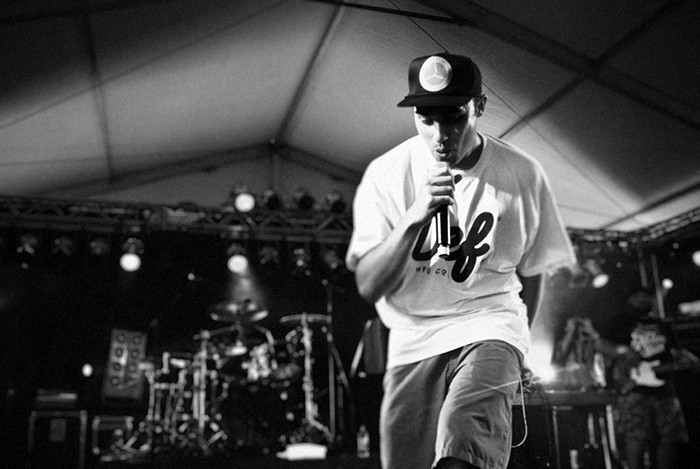
David Dallas - Homegrown, Wellington, 2013. - Photo by EJ Mathers
On the day, the festival’s capacity crowd was entertained by the likes of Shihad, OpShop, The Feelers, Fat Freddy’s Drop, Six60, David Dallas, Kids of 88, P-Money, Bulletproof, The Adults and Tiki Taane. In a review for Muzic.net.nz, site contributor Terry666 said, “Homegrown is a massive event showcasing some of New Zealand’s greatest cultural assets. It’s a special day in which you can indulge in the finest of New Zealand’s bands, from rock to pop and hip hop all in one magical place. When I die, I hope this is what heaven is like. We have the best music right here in our own backyard ... Homegrown!”
The following year, Homegrown celebrated its sixth sold-out edition. In a media statement issued at the time, Wright attributed the festival’s success to two factors: “The strength of Kiwi music and a fantastic group of equally passionate sponsors and media partners who play a big part in championing its success.” That ANZAC weekend, 45 New Zealand acts performed over six stages to a 17,000-person crowd. The performers included Shapeshifter, Shihad, I Am Giant, Elemeno P, Kora, David Dallas, Kids of 88, P-Money, Aaradhna, Minuit and Ladi6.
Throughout the late 2000s and early 2010s, Homegrown thoroughly bedded in as a key calendar event, not just with the audience but musicians, bands and DJs from across New Zealand as well. “For me, Homegrown is always legendary,” said Phil Bell, aka DJ Sir-Vere. “The reason it’s so great is because it brings the Aotearoa music whānau together for the weekend. Something magic always happens when you get that many talented people in the same spot.”
By 2014, Homegrown had grown to the point where it accommodated eight stages and 62 New Zealand acts. In a review for Stuff, journalist Michelle Duff described bouncing through the festival to catch performances from Head Like a Hole, X Factor runner-up Benny Tipene, the Auckland-based abstract rap group @Peace, Fat Freddy’s Drop, beatbox champion King Homeboy, dubstep DJ/producer Optimus Gryme, and drum & bass duo State of Mind.
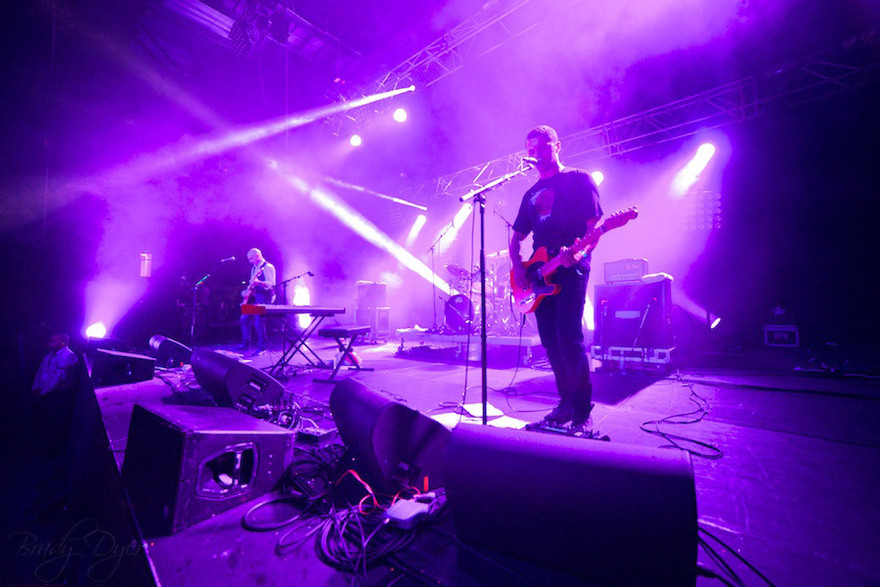
Opshop at Homegrown 2014 - Photo by Brady Dyer
Over the rest of the 2010s, Homegrown continued to be a huge force for summer entertainment in the capital, along the way drawing wave after wave of attendees and fast-rising new acts from around the country. In 2017, when Wellington was experiencing a particularly wet summer, local reggae band Tomorrow People told Stuff reporter Chelsea McLaughlin that they were hoping to bring some much-needed sunshine to the capital for that year’s festival edition.
Changing times
As hoped for, on the day, the sunshine delivered. Although it wasn’t the same the following year, the party still went on. In 2019, however, in the wake of the tragic Christchurch mosque shootings, the dub and roots stage in Waitangi Park was temporarily evacuated after security sighted an attendee with a far-right tattoo. In a news story for Stuff, Homegrown spokeswoman Kelly Wright apologised for the inconvenience but added safety was of “utmost importance” to the organisers.
In 2020, at the start of New Zealand’s Covid-19 lockdown, Homegrown was cancelled for the first time in its then-12-year history. The following year, it returned with 50 local acts performing across six local stages to a 20,000-person audience.

The crowd at the Park Stage at night, Homegrown, Wellington, 2024. - Photo by Pretoria Gordon/RNZ
As music journalist Tim Gruar observed in a review for the Ambient Light blog, “There were old familiar faces and new acts, including Chaii, Navvy, Paige, Troy Kingi & the Clutch, Home Brew and Goodshirt.” In his review, he also mentioned massive performances from L.A.B., Shapeshifter, Ladi6, Sachi, Sons of Zion, Katchafire and Deadbeat (aka Shelton Woolright from Blindspott). Plus, he commented on the performer gender disparity criticisms the festival began fielding in the mid-2010s and noted how challenging it must have been to bring the festival together that year.
“In response to criticism from various quarters, Homegrown Management are claiming they have addressed the gender balance with a number of new acts featuring women, raising the overall percentage of artists featuring women to 22% – evidence of their commitment to a more gender diverse line-up. Yes, it’s a move in the right direction. But there is still a long way to go. However, given the chaos Covid has caused this and last year, it’s still a wonder the festival has managed to come together at all. Don’t underestimate the cat-herding skills, sleepless nights, anxiety overloads and sheer logistical effort required to do this – even in regular times, let alone this ‘new normal’. That has to be admired!”
In 2022, while New Zealand was in the Covid red traffic-light setting, Homegrown had no option but once again to cancel the festival for the year. In an interview with Stuff journalist Mikaela Wilkes, Homegrown managing director Andrew Tuck said, “We are devastated. We thought at the start of summer we were going to sneak through, but it feels right to call it now for everyone’s safety.”
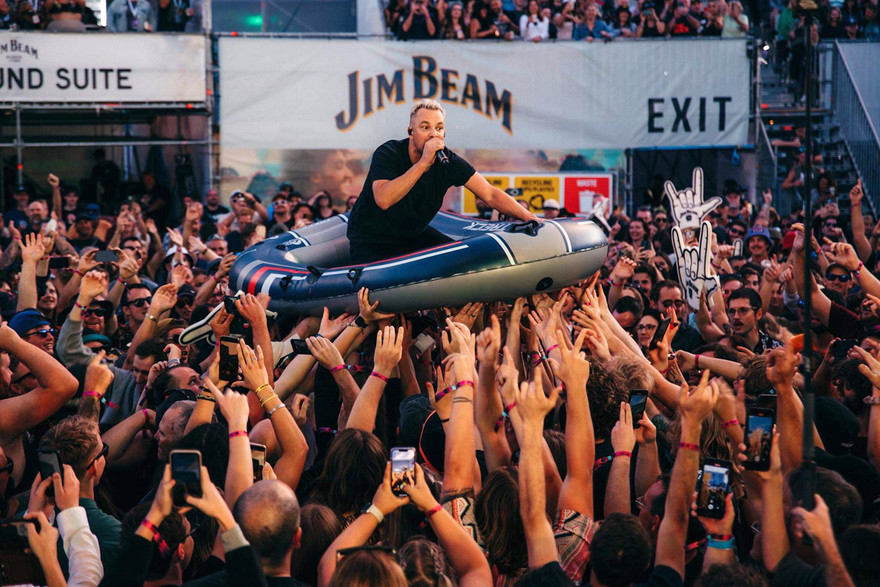
Villainy at Homegrown 2023, Wellington. - Photo by Nichole Davis
Homegrown triumphantly returned to the Wellington waterfront in 2023 with more than 45 artists, including Sir Dave Dobbyn, Gin Wigmore, Savage, Shapeshifter, and Katchafire, performing across five stages to 24,000 people.
In 2024 they repeated the same feat with the likes of Home Brew, Avantdale Bowling Club, Bic Runga, Teeks, Beastwars, Montell 2099, Muroki, Paige Julia, Katchafire, Alien Weaponry, L.A.B, and Kora gracing the stages on a sunny day.
Over at Newshub, reporter Seni Iasona described the 2023 festival as rising from the ashes like a phoenix. In his words, “I wouldn’t have wanted to spend my Saturday any other way. It was everything you would want at a city festival.”
--
Read more about the history of New Zealand music festivals in AudioCulture’s Festival Collection
--
RNZ: Homegrown festival: From Kiwi classics to TikTok trends
RNZ: Homegrown review: A festival so good even the mayor had a boogie